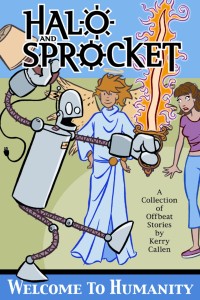When DC Comics first announced the quartet of miniseries leading up to Infinite Crisis, I figured I’d take a look at Day of Vengeance (the magic corner of the DCU) and maybe Rann/Thanagar War (the Sci-Fi corner), and that was it. Countdown to Infinite Crisis got me excited about The OMAC Project, though, so I figured I’d pick up the first issue of each mini and see what I thought.
At first I found OMAC and Rann/Thanagar the most interesting, and Day of Vengeance just enough to get me to try issue 2. Villains United didn’t impress me at all.
After three issues of each (plus Day of Vengeance #4 out this week), my impressions have more or less reversed. On a whim I picked up Villains United #2 and enjoyed it much more. OMAC and Rann/Thanagar are both bogged down, and Day of Vengeance reminds me a lot of March of the Wooden Soldiers (my least favorite Fables arc): some nice moments, but a bit slow and not particularly exciting.
Right now, I could probably leave OMAC and Day of Vengeance, and the only things keeping me on board Rann/Thanagar War are the L.E.G.I.O.N cameos and trying to figure out what’s going on with Blackfire. Part of the problem is that none of them seem to be six issues worth of story. Sure, there’s a cliffhanger at the end of each issue, but they just still feel padded.
Well, we know DC is planning for big changes in the Crisis’ wake. I can only hope they have good reasons for what they end up doing, rather than just doing something like “Let’s kill off the Flash and Supergirl again because we did it 20 years ago!”





 The last two were actually in San Clemente, where we stopped for coffee on the way back. We picked an exit and got off, looking for a Diedrich, Starbucks, or other coffee shop. We found a Starbucks (with a Coffee Bean and Tea Leaf across the street that we didn’t notice until we got back in the car), but we passed two odd signs on the way to and from the freeway. We couldn’t get decent pictures from the car, and neither of us was in the mood to find a parking space and take the photo on foot. But I did find photos on Flickr by Brian Mitchell, under a
The last two were actually in San Clemente, where we stopped for coffee on the way back. We picked an exit and got off, looking for a Diedrich, Starbucks, or other coffee shop. We found a Starbucks (with a Coffee Bean and Tea Leaf across the street that we didn’t notice until we got back in the car), but we passed two odd signs on the way to and from the freeway. We couldn’t get decent pictures from the car, and neither of us was in the mood to find a parking space and take the photo on foot. But I did find photos on Flickr by Brian Mitchell, under a 

